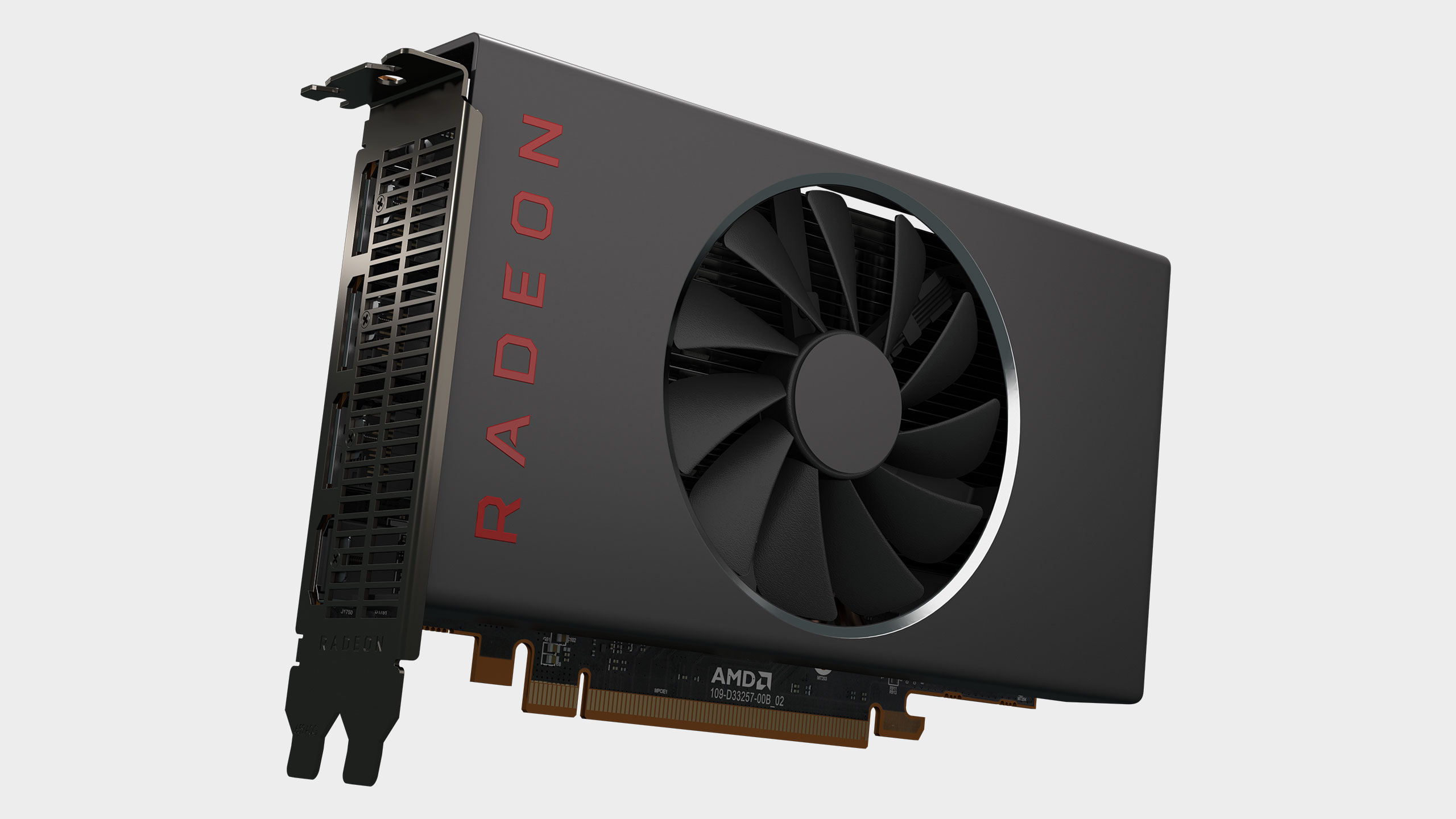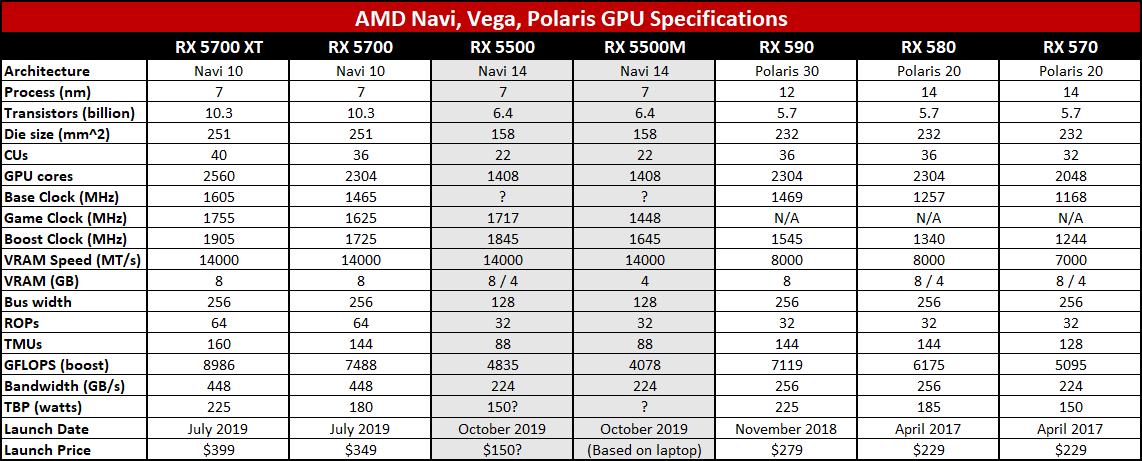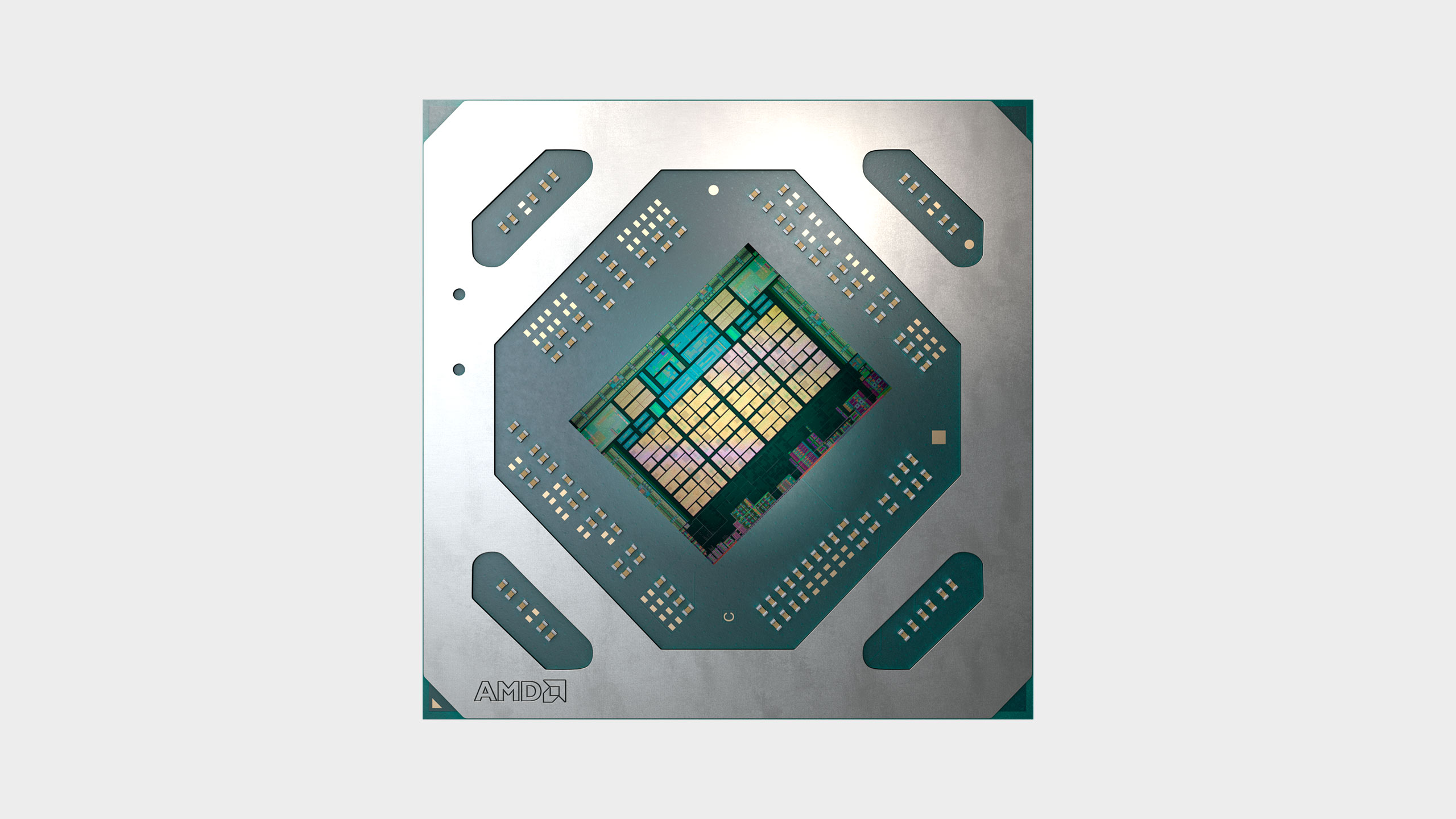AMD’s new Radeon RX 5500 GPUs take aim at 1080p gaming
The Radeon RX 5500 is launching to both desktop and mobile.

We can stop talking about the Radeon RX 5500 rumors, because the newest addition to AMD's growing family of Navi's graphics cards is now official, with a complete list of specifications for both mobile and desktop variants.
AMD formally introduced the Radeon RX 5500 and Radeon RX 5500M today, and made it clear these new GPUs are intended for 1080p gaming. We'll have some benchmarks to share soon enough (a full review is coming, once we get hardware), but in the meantime, let's have a look at the specs.

Both the desktop and mobile variants have the same number of compute units and stream processors, with the desktop 5500 pushing higher clocks. The desktop version will also come in both 8GB and 4GB models, whereas the mobile GPU will only be offered with 4GB of GDDR6 memory.
Like the higher end 5700 series, the new 5500 parts are based on AMD's underlying Radeon DNA (RDNA) architecture, albeit with a smaller Navi 14 GPU with 6.4 billion transistors (Navi 10 boasts 10.3 billion). According to our friends at AnandTech, Navi as represented here with 22 CUs is not a fully enabled version of Navi 14. It's not clear what is, though 24 or even 26 CUs are fair assumptions.

Power requirements look a bit odd, as AMD specs the 5500 at 150W. We asked about this and were informed that it's mostly just a conservative limit. Since the card will need a 6-pin PEG connector, it can use up to 150W (75W for 6-pin PEG, and another 75W from the PCIe x16 slot). Custom overclocked cards may come close to that limit, but in practice it will probably run closer to 110W (depending on the model).
As constructed, this will allow AMD to price the 5500 series more aggressively, though it has not yet announce MSRPs. For reference, the 5700 XT and 5700 are priced at $399 and $349, respectively. AMD says the RX 5500 will outperform the GTX 1650, but it's didn't compare performance to the 1660. It will probably land between those two Nvidia GPUs in both price and performance. It will also hit OEM builds just in time for Black Friday deals, so keep an eye out.
"With the newest additions to the Radeon family, AMD is bringing its advanced RDNA gaming architecture and industry-leading 7nm process technology to legions of mainstream gamers worldwide in exciting new form factors and systems. Powered by RDNA, the Radeon RX 5500 provides up to 1.6X higher gaming performance-per-watt than current Radeon graphics cards based on the Graphics Core Next (GCN) architecture," AMD says.
Keep up to date with the most important stories and the best deals, as picked by the PC Gamer team.

As far as performance is concerned, based on AMD's internal benchmarks, the RX 5500 will likely perform a lot like an RX 590. AMD compared it with the RX 480 in its benchmarks and showed it leading by around 20 percent in a few games. The 480 and 580 are basically the same chip, just with a few minor tweaks and higher clocks on the 580 that boosted performance by 10 percent. The 590 used a refined 12nm process but kept the same die size and architecture, adding another 12 percent or so to performance. So 20 percent faster than a 480 gets us back to the 590.
Pricing is the big mystery here. AMD has not actually launched the retail RX 5500 and 5500M, and is not even saying precisely when they will arrive for DIY builders. Instead, the announcement is focused AMD's partnership with OEMs.
To that end, MSI will launch an Alpha 15 laptop later this month with a 5500M inside. In addition, RX 5500 graphics cards will show up in pre-built desktop systems next month, including HP's Omen Obelisk and Pavilion PCs and Lenovo's T350 and IdeaCentre T540 systems. Then in December, the 5500 will find its way into Acer's Nitro 50 PCs.
As for standalone cards offered up at the usual retailers, those will launch sometime in the fourth quarter. Based on the performance expectations, the RX 5500 will be more of a lateral move from the RX 580/590, and will likely sell in the $175 range (plus or minus $25).
Paul has been playing PC games and raking his knuckles on computer hardware since the Commodore 64. He does not have any tattoos, but thinks it would be cool to get one that reads LOAD"*",8,1. In his off time, he rides motorcycles and wrestles alligators (only one of those is true).


